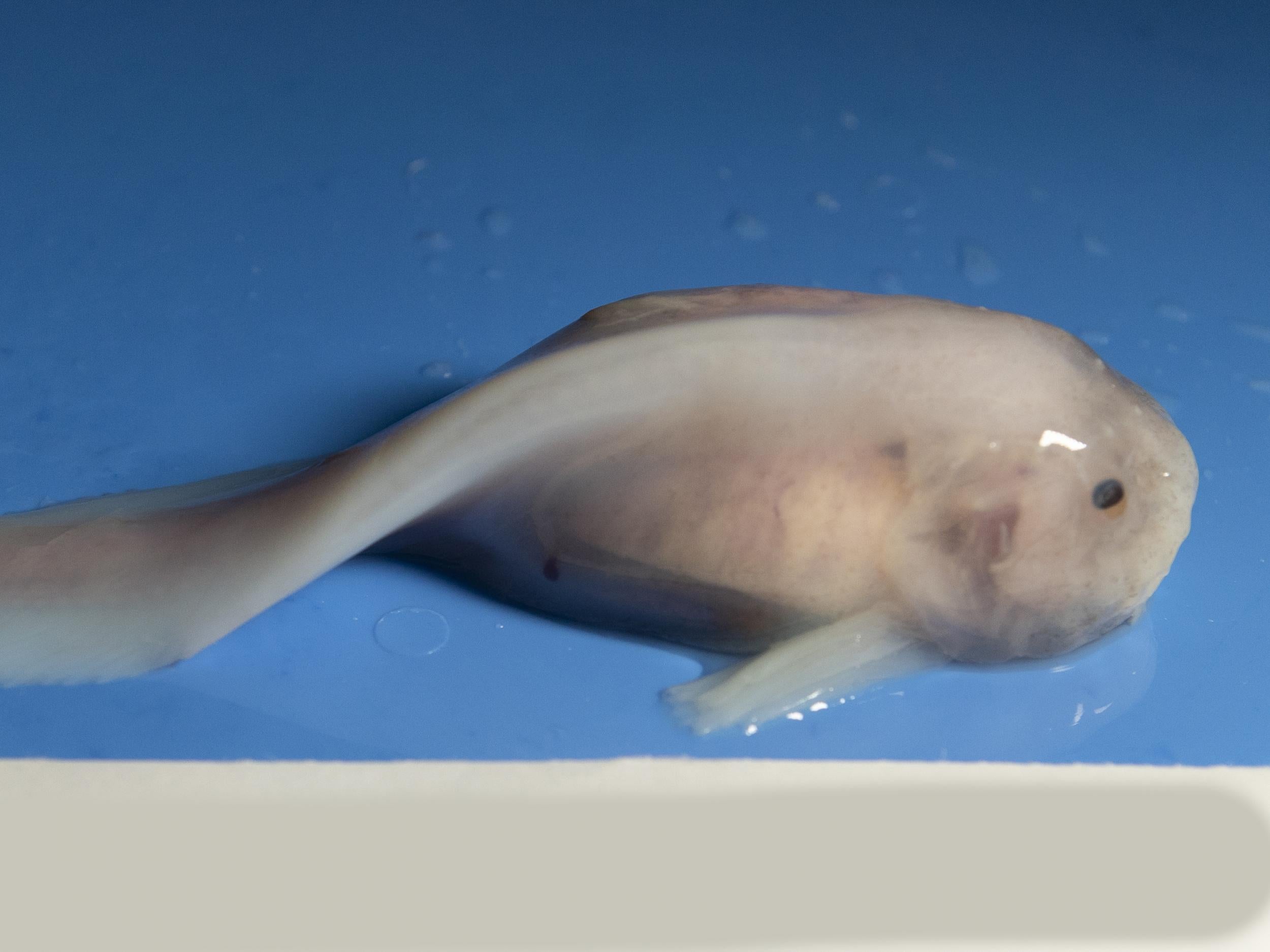Deep sea snailfish has soft bones and open skull to cope with crushing pressure, study finds
Research shows how animals have adapted to survive in hostile environments

Snailfish use their soft skeleton and partially open skull to survive intense crushing pressure in some of the deepest areas of the ocean, according to a study.
Researchers caught several snailfishes to study how they had adapted to the deep sea and compared them to closely-related species living in shallow waters.
Snailfish live in some of the deepest areas of the ocean, known as the hadal zone, between six and 11km below the surface.
The zone is thought to be among the most hostile areas on earth, due to high pressure, darkness, cold temperatures and scarce food resources.
Despite these problems, snailfishes are top predators in the hadal zone’s food web and are the most common and dominant fish family in the area.
Lead researcher Wen Wang and colleagues found snailfishes caught in the Mariana Trench had transparent skin, an inflated stomach, soft bones and incompletely-closed skulls, unlike similar shallow sea species.
The research team found osteocalcin, a gene that regulates tissue mineralisation and skeletal development, is cut off in the hadal snailfish.
The truncated gene may contribute to the species’ unusually soft skeleton by preventing bones from mineralising.
Snailfish species’ incompletely-closed skull is believed to protect the brain by making sure crushing pressure does not push it out.
The study also found multiple copies of genes which make cell membranes more fluid, which researchers believed could help cells function at extreme pressures in the deep sea, and the loss of several photoreceptor genes, resulting in snailfishes’ poor vision in light.
Researchers said the extensive internal and external adaptations by deep sea snailfish has helped them to endure the immense pressures and challenges from living in the deep sea.
They concluded that the paper, which was published in Nature Ecology & Evolution, could help to shed light on how species can adapt to extreme environments.
Join our commenting forum
Join thought-provoking conversations, follow other Independent readers and see their replies
Comments